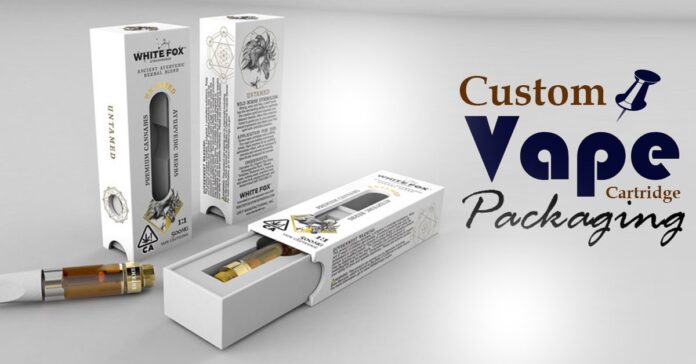Plastic pollution is a global problem. Harms of plastic are not just limited to humans but also nature. The use of plastic packaging has become necessary in today’s world with increasing population and development; however, there are many disadvantages that come with it as well. This article will focus on five weaknesses of plastic usage and better alternatives for nature-friendly packaging.
Plastic is used in every area of life without knowing its damage to nature and the human body. Many businesses started using alternatives to plastic packaging to protect their products from damage as well as green to nature packaging solutions. As a result, there has been great advancement in eco-friendly packaging solutions. Most eatables are packed in natural and healthy Kraft paper.
Almost all of the cannabis products, especially cannabis cartridges, are now packed in CBD cartridge packaging. It’s an excellent initiative to support nature and to promote natural solutions.
Harms of Plastic
Many of the most common areas in which plastic is being used are packaging. It protects goods from damage, maintains their freshness, and preserves food quality while traveling long distances to reach their destination.
However, many plastics are not biodegradable and thus require that they be stored for years before being disposed of correctly; this results in excessive accumulation all around us. In addition to these pollutants, chemicals are released into our air when it’s burnt or decomposes on landfills – leading to adverse health effects such as asthma, cancer, and reproductive disorders, among others.
A study found that every hour each person throws out more than 200 kilos (440 pounds) of plastic waste like water bottles and wrappers. If you then multiply that number by the country’s population, it becomes easy to understand how much damage is being done.
Disadvantages of Plastic Packaging
1-Very Short Use Lifespan
The first disadvantage of plastics is their use-life span – which can be as short as one year when exposed to UV light and temperatures more than 50 degrees Celsius, or less than 20 years before they start decomposing in landfills. This short lifespan means we discard them into our environment, where it will take decades for them to break down naturally.
2-Typical Resource is non-Recyclable
Plastic items are often made from fossil fuel-based products. Around 4% of these fuels go directly into the plastics industry to create new products. When we look at the number of resources consumed during refinement and the rise in demand, it’s possible that 20% will be used for plastic production within a decade if this trend continues.
3-Plastic Harms Animals and the environment
When animals ingest plastic, they risk death by choking or starvation. The toxins in plastics can also cause stomach ulcers that lead to colic and intestinal bleeding, which leads to anemia. When we drink bottled water from petroleum-based bottles, those chemicals are being transferred into our bodies through the digestion process and create a very harmful state.
4-Plastic is a Harm to Marine Life
Every day, ten metric tons of plastic items are washed into the ocean in Los Angeles. These items break down into tiny fragments that become microscopic in size and can be consumed by marine life (especially fish). Every year up to 24,000 tons of plastic contaminate our food chain, with 25% of fish sold at California markets containing fibrous.
5-We Cannot Recycle Plastic Many Times
Metals have the potential to be recycled numerous times into a variety of different products, but plastics don’t share that opportunity. After all, we can only reuse or recover it a specific number of times before its quality and integrity are lost.
That means plastic is more likely than metal to either downcycle this product or incinerate them in order for us not to store them away from landfills where they could easily pollute our water sources like rivers and oceans. Accordingly, over 93 billion pieces of plastic enter the waste stream every year without touching anything!
Alternatives for Plastic Usage
How can we use alternatives to plastic packaging to overcome environmental damage?
Below there are some suggestions given.
Nature-Friendly Packaging
Nature-friendly packaging might be a great alternative to plastic. It is possible that nature-friendly packaging could replace the use of plastics in our society and eliminate or reduce environmental damage. In this way, we can minimize both our impact on the environment as well as help solve some of these problems together with governments and corporations.”
“Moreover, many people are not aware of how much damage they have caused by producing plastic for one year: an estimated 30 million barrels of oil! Among other harmful effects which it causes like harming wildlife populations, contaminating food chains, etc., let’s discuss just one more – having such significant adverse impact on climate change because petrochemicals make up 50% of global warming emissions.
Use Paper or Textile Bags in Grocery Shopping Instead of Plastic
In many countries, plastic shopping bags are banned now to help protect nature. Instead, we can use Kraft paper bags to carry goods since these paper bags are produced from nature and are very rigid in nature.
Stop Using Straws
You can stop using regular plastic straws that are harmful to your health; instead, use new paper straw or reusable stainless steel, glass, or bamboo cups/mugs.
Buy Paper Wrapped Food Items
Avoid single-use plastic-wrapped food items such as hot dogs, sliced meat, and pre-packaged sandwiches. You can also say NO to all types of plastic packaging products like rice/pasta boxes, paper cups & plates, etc. these are very harmful to your health when you use them again.
There are a few other alternatives like canvas or cotton bags, reusable fabric tote bags, and coolers for water bottles. We must take steps to protect nature from the hazards of plastic packaging.
Final Words
When you buy a product, it is essential to consider how the packaging will affect both your customer and the environment. Plastic has been shown to be harmful to humans as well as animals living in water systems when disposed of improperly.
You can avoid this by using eco-friendly custom packaging from Impression Ville that is just as durable yet better for our planet! They offer many different shapes and sizes, so you are sure to find one that fits your needs perfectly. Contact them today if you would like more information on what they have available on the website or want help selecting an option that suits your business best!


